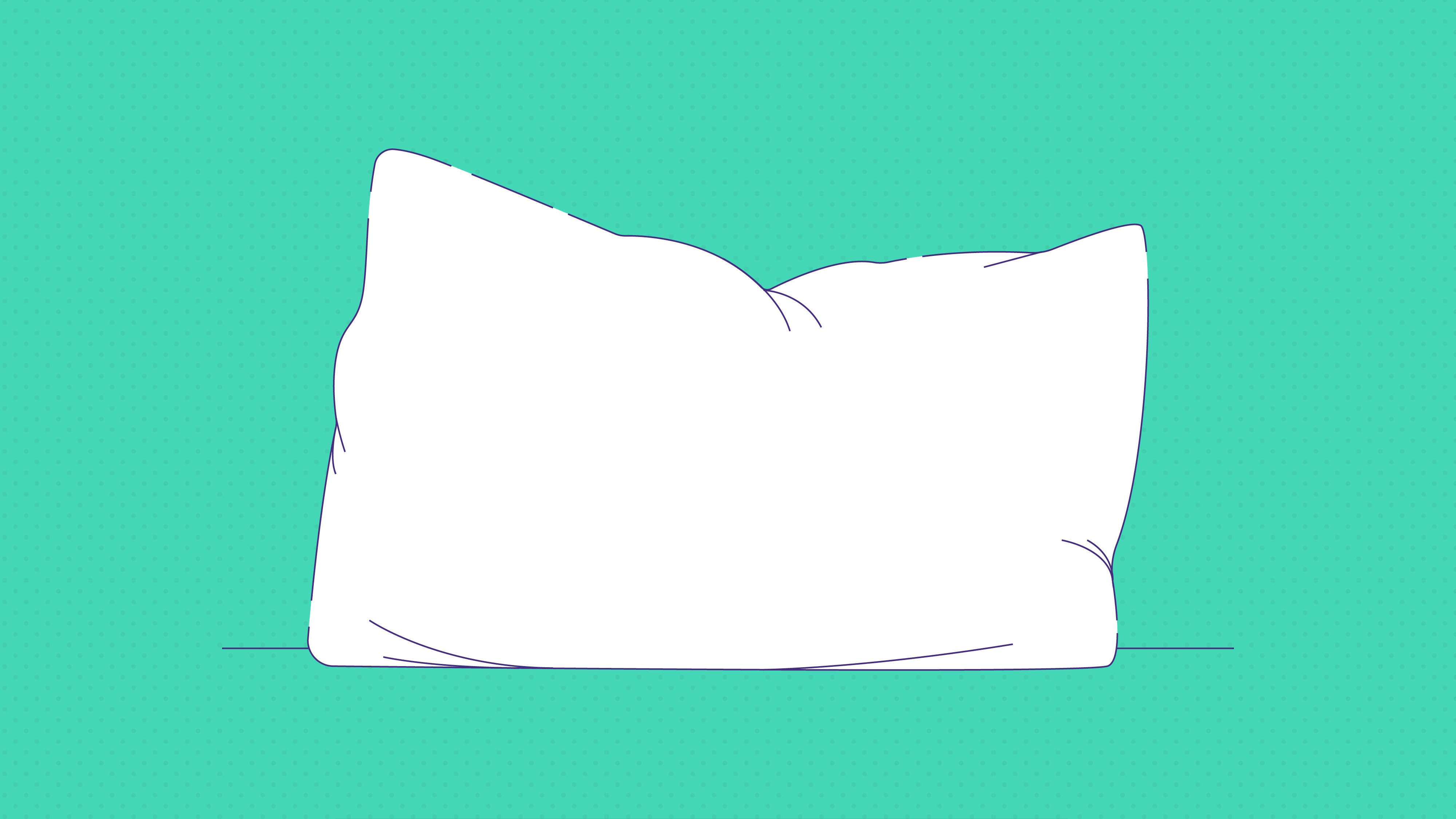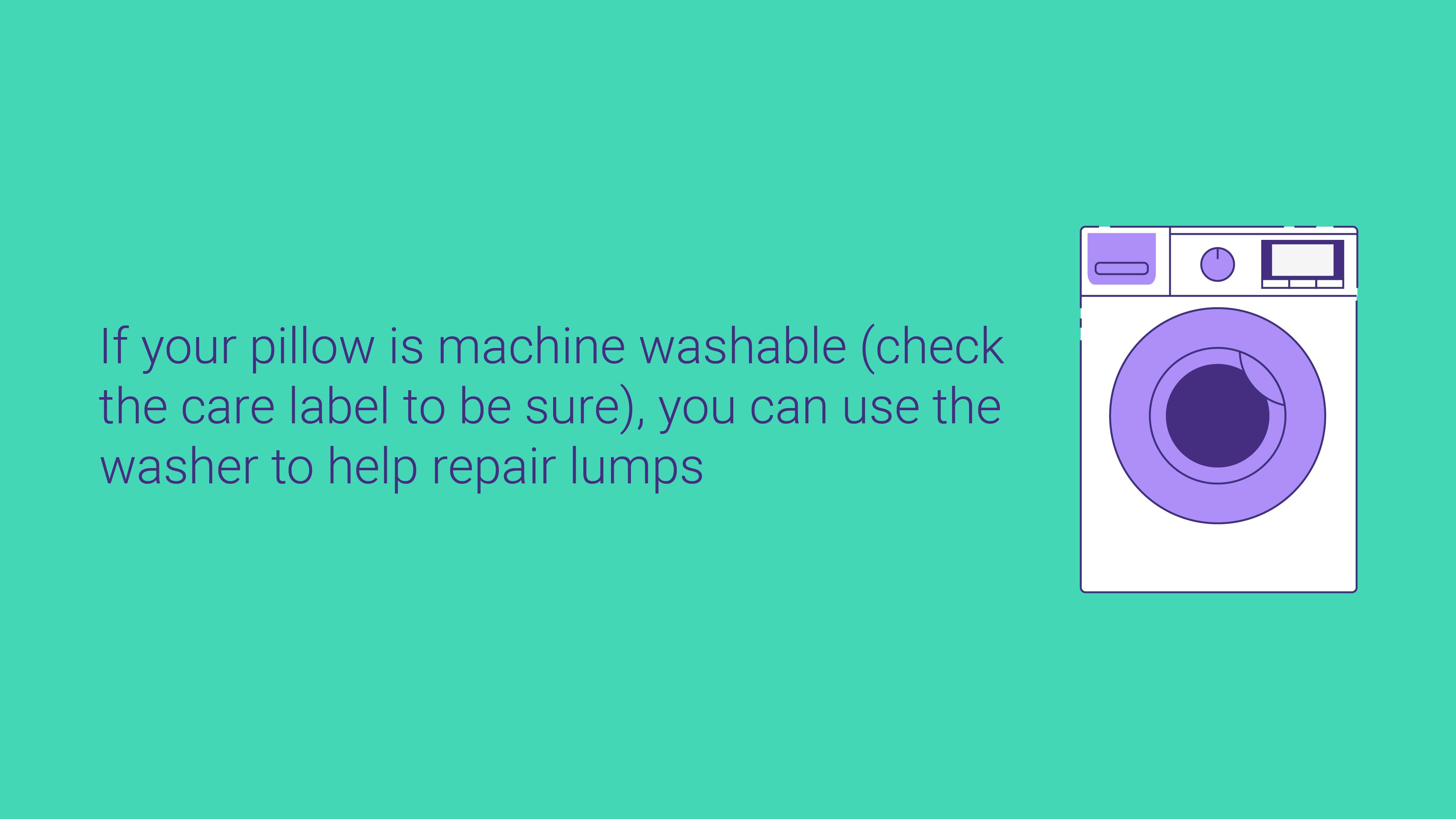
How to Fix a Lumpy Pillow

- De-lump your pillow with simple methods like using tennis balls, manual fluffing, washing, and applying dry heat, which can help restore the pillow’s consistency and extend its lifespan.
- Foam pillows can develop lumps over time, and while foam fills cannot be fixed, other pillow types can be rejuvenated to prolong their use, potentially lasting up to 5-10 years for natural down and latex foam pillows.
- Follow the pillow’s care label instructions for washing and avoid using fabric softener, which can cause certain stuffing materials to stick together and contribute to lumpiness. If clumps persist, consider replacing your pillow.
Pillows are great. They keep your head elevated, support your neck, keep your spine aligned, and offer you cushioning and comfort. One of the most irritating things about pillows is their tendency to get lumpy. Most pillow fills will clump up eventually. But does that mean you’ve got to throw them out and get new ones? Thankfully, no.
There are lots of things you can do to de-lump a pillow. The best course of action depends on the pillow’s fill and what’s causing it to clump. Below, we’ll take a look at some of the most common methods for getting rid of pillow lumps and restoring consistency.
Tennis Balls
Some pillows just need a good pounding. Enter the tennis ball trick. To perform this trick, put a tennis ball or two inside a clean sock. Run your dry or wet pillow through a dryer cycle with the tennis balls. You’ll want to use either low or no heat. You also want to ensure your tennis balls are secure inside their sock. This prevents them from transferring yellow color to your pillow.
Manual Fluffing
There are lots of techniques you can use to massage the lumps out of your pillow. Lay it flat and give the pillow fill a few punches or karate chops, aiming for the biggest clumps. You can also give it a good manual fluffing by grasping both ends in your hands, squeezing it, and stretching it out again. Massage any individual clumps you find during this squeezing until they dissipate.
Pillows you can fluff up easily include:
- Down pillows
- Feather pillows
- Memory foam pillows with shredded fills
Washing Machine
If your pillow is machine washable (check the care label to be sure), you can use the washer to help repair lumps. Place your pillow in the washing machine, and stand it vertically if your machine has an agitator.
To wash your pillow, run it through a spin cycle and at least one rinse cycle. This will clean out dirt, sweat, and oil from your pillow stuffing and help it de-clump after it dries.
When it comes to options such as feather pillows, though, you have to be careful how you wash them or you may cause the lumps you want to avoid. See our guide on cleaning feather pillows for more information.

Dry Heat
Sometimes, using dry heat to evaporate the moisture from the stuffing in your pillow is enough to get the clumps out. There are several things you can do to fluff a pillow with heat.
Set Your Pillow in the Sun
Lay your pillow outside on a warm, dry, and sunny day. Radiation from the sun will do all the work for you, baking the moisture out of your pillow. The added ventilation of the outdoor air can help increase evaporation.
To increase airflow even more, set your pillow on a baking rack or another grated surface to get the air circulating underneath it. Just make sure you leave your pillow in the sun for at least an hour on each side and that you sunbake both sides evenly.
Use the Dryer
Tossing your pillow in the clothes dryer on low heat for around 10 minutes can help fluff it right back up, especially if it’s made of fiberfill or feathers. Just make sure your down or feather pillows don’t have any holes in them. Otherwise, you could be looking at a dryer disaster.
What Pillow Types Can Grow Lumpy?
There are numerous types of pillows, but which ones are most likely to grow lumpy?
Generally speaking, pillows are more likely to grow lumpy if they’re filled with shredded materials instead. Types that have one-piece feels, such as the typical contour pillow, tend to stay smooth over time.
That’s not to say shredded fills are without their advantages. For example, because the fill promotes airflow, many of them make excellent cooling pillows.
FAQs
What makes pillows get lumpy?
The short answer is time. Time makes pillows get lumpy. All pillows age, and depending on their fill, that aging process can involve developing lumps. Pillow stuffing becomes full of dirt, debris, moisture, and oil as you sleep on them night after night. This makes pillow fills like down, feathers, cotton, and microfiber develop clumps.
Usually, cleaning your pillow or getting rid of excess moisture can eliminate these clumps. But you’re only extending your pillow’s life when you do this. Your pillow won’t last forever because it will eventually become so aged that the only thing you can do is replace it.
Can foam pillows develop lumps?
Yes. Memory foam and latex foam pillows can develop lumps due to age. The main difference is it takes foams a lot longer to get lumpy than it does other stuffings, and there’s nothing you can do to fix lumpy foam. If your foam pillow has become lumpy, you can’t de-lump it. You just need to replace it.
How do I know if I can machine-wash my pillow?
Just about every pillow will come with a care label specifying how to clean it. If your care label has gone missing for whatever reason, there are some general rules. Pillows stuffed with cotton, alternative down, or fiberfill can be tossed in the washing machine on the gentle cycle with regular detergent and dried on low heat.
Never wash foam or feathers in a tub or machine. They can’t get wet. Down pillows must be soak-washed either in a bathtub or machine with no agitator to avoid damaging the pillow. Also, you have to use specialized down soap rather than regular detergent. As for foam fills, you must spot clean the pillow.
Does fabric softener help lumps?
No. Fabric softener and dryer sheets make fabrics feel softer by leaving chemical lubricant residue on clothes. This reduces static cling and makes fabrics feel softer to the touch without actually making them softer. However, these softeners can make pillows lumpier, as the residue they leave behind can cause certain stuffing materials to stick together.
When should I replace my lumpy pillows?
If your foam pillow is lumpy, you can go ahead and replace it. If non-foam pillows are lumpy, things can get more complicated. If you can get the clumps out of the pillow’s stuffing, you can probably extend its life a little longer. If the clumps won’t come out, it’s time to replace your pillow.
Different pillows have different lifespans. Feathers, memory foam, and down alternative will last between 18 and 36 months. Natural down and latex foam pillows will last a lot longer—between 5 and 10 years.
Bottom Line
There’s nothing worse than discovering your favorite pillow has gone all lumpy. The good news is there are lots of things you can do to help a pillow that’s down in the lumps. From massages to tennis balls to dry heat, you can de-clump your pillow and dramatically extend its life with just a few simple at-home tricks.
